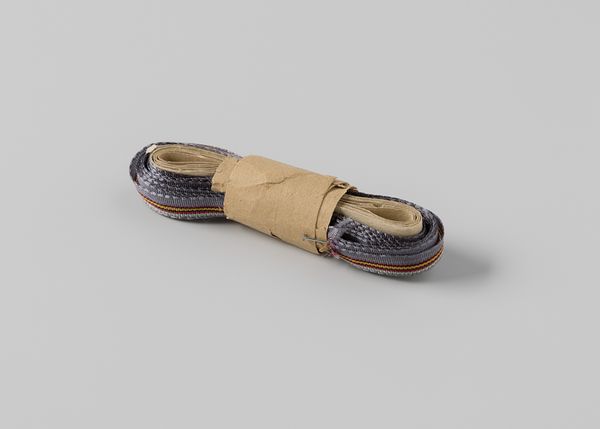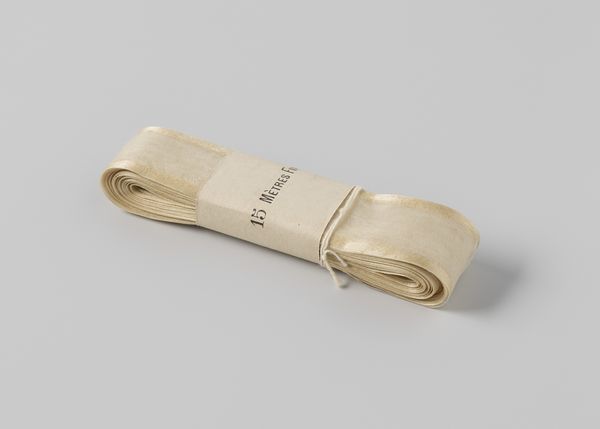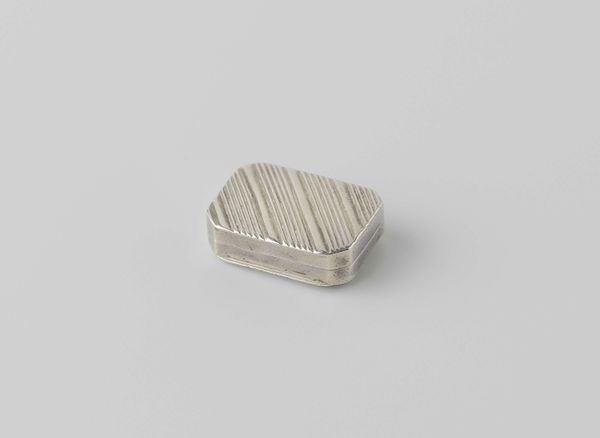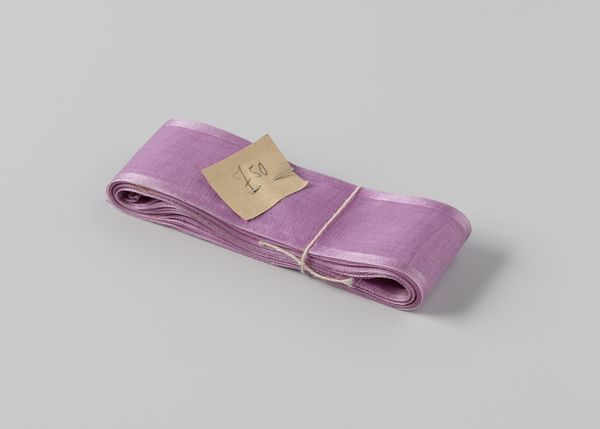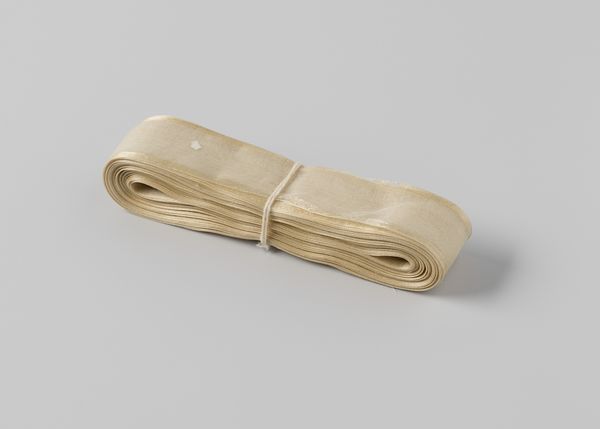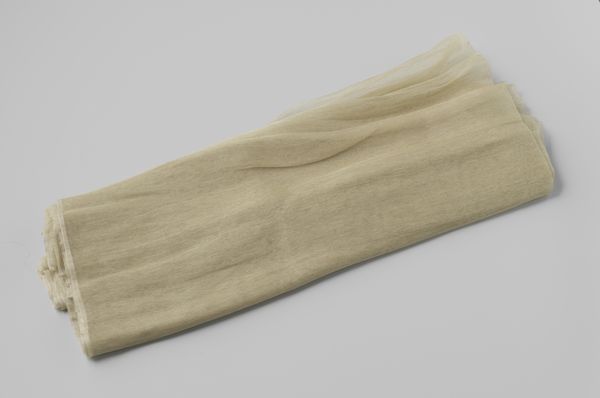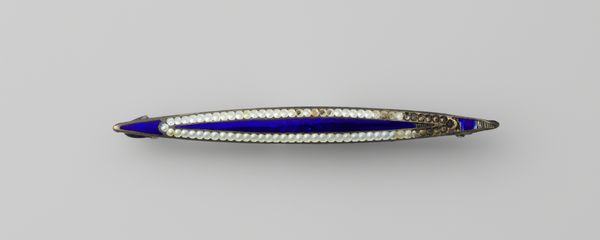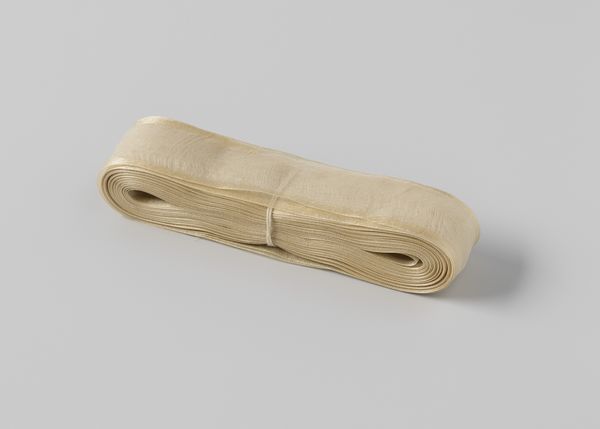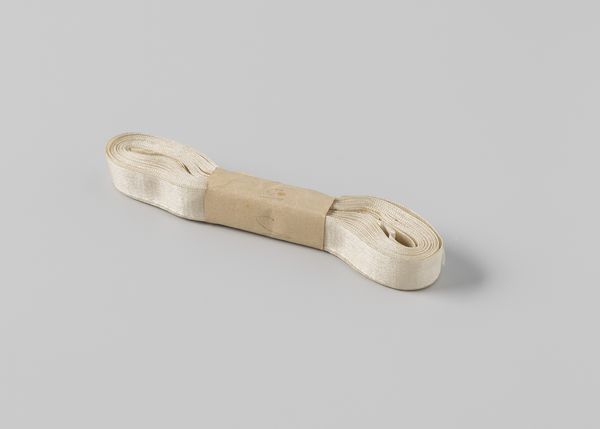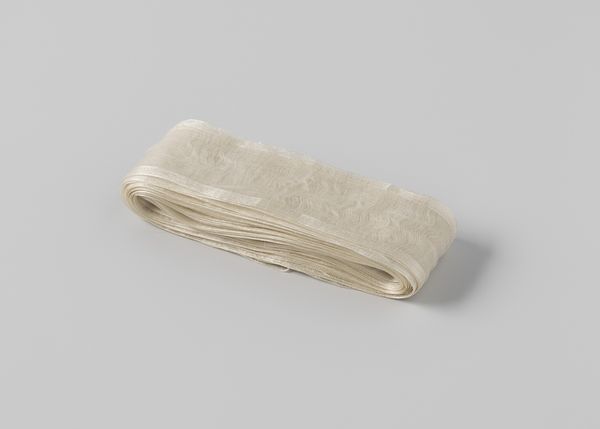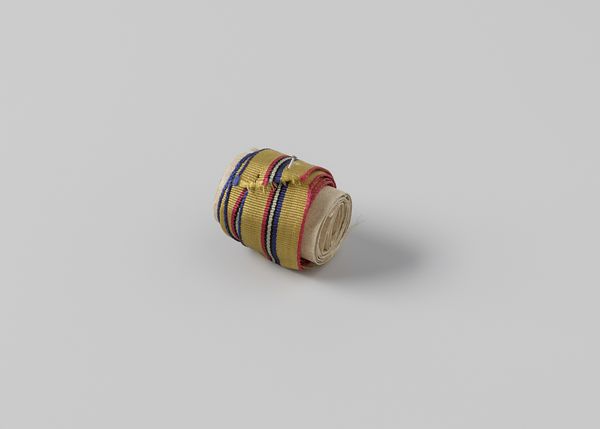
Lint, gestreept in legergroen, lichtblauw, oranje, zwart, fuchsia en lila before 1926
0:00
0:00
gustavschnitzler
Rijksmuseum
mixed-media, textile
#
mixed-media
#
textile
#
abstraction
Dimensions: width 1.4 cm, length 8.5 cm, width 2.6 cm, height 2.5 cm
Copyright: Rijks Museum: Open Domain
Editor: Here we have "Lint, gestreept in legergroen, lichtblauw, oranje, zwart, fuchsia en lila," by Gustav Schnitzler, likely created before 1926. It's a mixed-media piece incorporating textile, and it feels almost accidental – a humble scrap elevated. What historical narratives do you think this piece whispers? Curator: That's a perceptive reaction. Its seeming 'humbleness' is precisely where the historical intrigue lies. Consider the early 20th century—the rise of industrial textile production, and the democratizing influence of mass-produced materials on fashion and art. Is this, perhaps, a study in color, a remnant from a textile mill, or a piece used for educational purposes? These institutions influenced not only the availability of art supplies, but also popular aesthetics and understandings of abstraction. Does knowing that the piece resides in the Rijksmuseum, how does it transform your perception? Editor: It definitely changes it. To see it as potentially just scrap, next to something by Rembrandt for example, makes me think more about the politics of display. Its in the museum - therefore it IS important. Curator: Exactly! Its enshrinement transforms the mundane. How does this contrast affect our assumptions about artistic value? I find myself wondering about the socio-economic status of individuals who engaged with similar materials during this period. Where would this textile find its place outside the realm of "high art"? Perhaps as embellishments on everyday clothing? Editor: I see what you mean. Now, thinking about how these colors and materials relate to fashion history or even design education shifts the focus entirely. It pushes you to consider context, placement and accessibility of what art actually can be! Curator: Precisely. Its beauty hinges upon how institutions legitimize everyday aesthetics. Editor: I’ve learned a lot – it seems that considering historical narratives reveals how power structures inform not just art’s creation, but even its perceived significance. Curator: Indeed. Considering Schnitzler's choice of what we think of as *common* colors brings history into new clarity, underscoring how our perception is inherently informed and swayed by context.
Comments
No comments
Be the first to comment and join the conversation on the ultimate creative platform.
